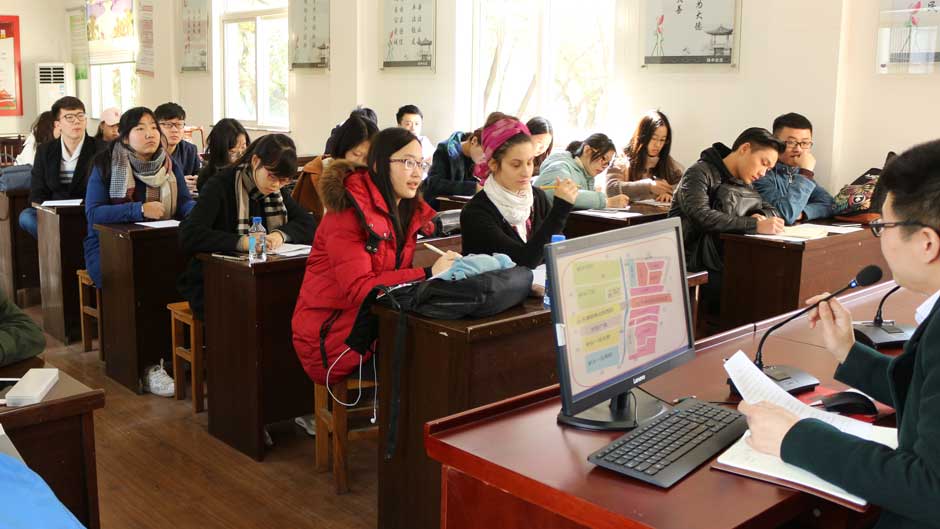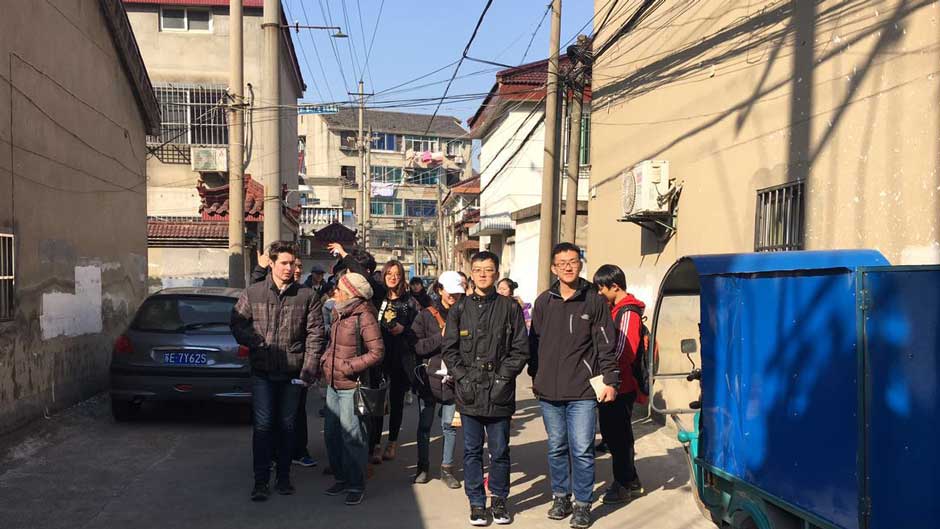29 Mar 2017
Year Two students from the Department of Urban Planning and Design at Xi’an Jiaotong-Liverpool University have been studying communities in Suzhou to explore the role urban planning plays in community development.
More than 80 students took part in an on-site study of three old communities in the Wujiang district of Suzhou, in order to gain a better understanding of the neighbourhoods and people’s needs.

The study focused on aspects such as people and community, local enterprises, facilities, movement, energy, water, waste management, access to food and biodiversity.
The visit was part of the assessment for academic modules on neighbourhood planning and skills for planning practice.
Dr Ying Chang, from the Department of Urban Planning and Design, and coordinator of the on-site learning, said that working with real communities was an important part of urban planning: “Students learn to understand local communities’ needs and that planning should be a bottom-up process – respecting the local context and local people is the cornerstone,” she said.

Yunhua Qian, director of the Dongmeng community, showed students around the community’s historic lanes and buildings, and shared her experiences of a culture-led regeneration project that took place within the community this year.
Mark Kats, an international student from Russia, said: “There were so many things to learn during the visit and our group took hundreds of pictures. The community was very different from other places I’ve visited and the local residents were really friendly."
Dr Chang said she felt this year’s students were particularly engaged thanks to other research work taking place within the University: “Our research into the demographic features and social engagement of Taihu Lake New Town has stimulated students’ research interests in this area.”

“Suzhou’s old town area is more interesting to them, compared with the modern parts of the city where they usually live. It differs in terms of the socio-economic groups that live there, their lifestyles, and the way in which the area has developed as wells the landscapes and transport systems within.”
Dr Christian Nolf and Florence Vannoorbeeck, who lead the module ‘Skills for Planning Practice’, chose the historic Songling area as a case-study: “As an ancient water-town, Songling offers a rich diversity of spatial conditions. Students are analysing these graphically and will eventually design some improvements for the area,” explained Dr Nolf.

The on-site visit, which was supported by teaching assistants Aura Istrate, Gao Du and Mengchuan Liu, is part of a series of collaborative activities focused on ‘planning a better home together’. These activities within Songling historic area, in the Wujiang district of Suzhou, are a result of the partnership between XJTLU and Tai Lake New Town Administrative Committee
Since March 2016, the Urban and Environmental Research Institute at XJTLU has been commissioned by Wujiang Taihu New Lake Town to carry out research and analysis on the urbanisation of the new town.
Dr Chang said that urban planning and design staff and students will continue to cooperate with the local community on urban design and environmental improvement.
“We plan to invite local residents from Songling historic area to attend a review of students’ presentations on this project,” she added.
29 Mar 2017




